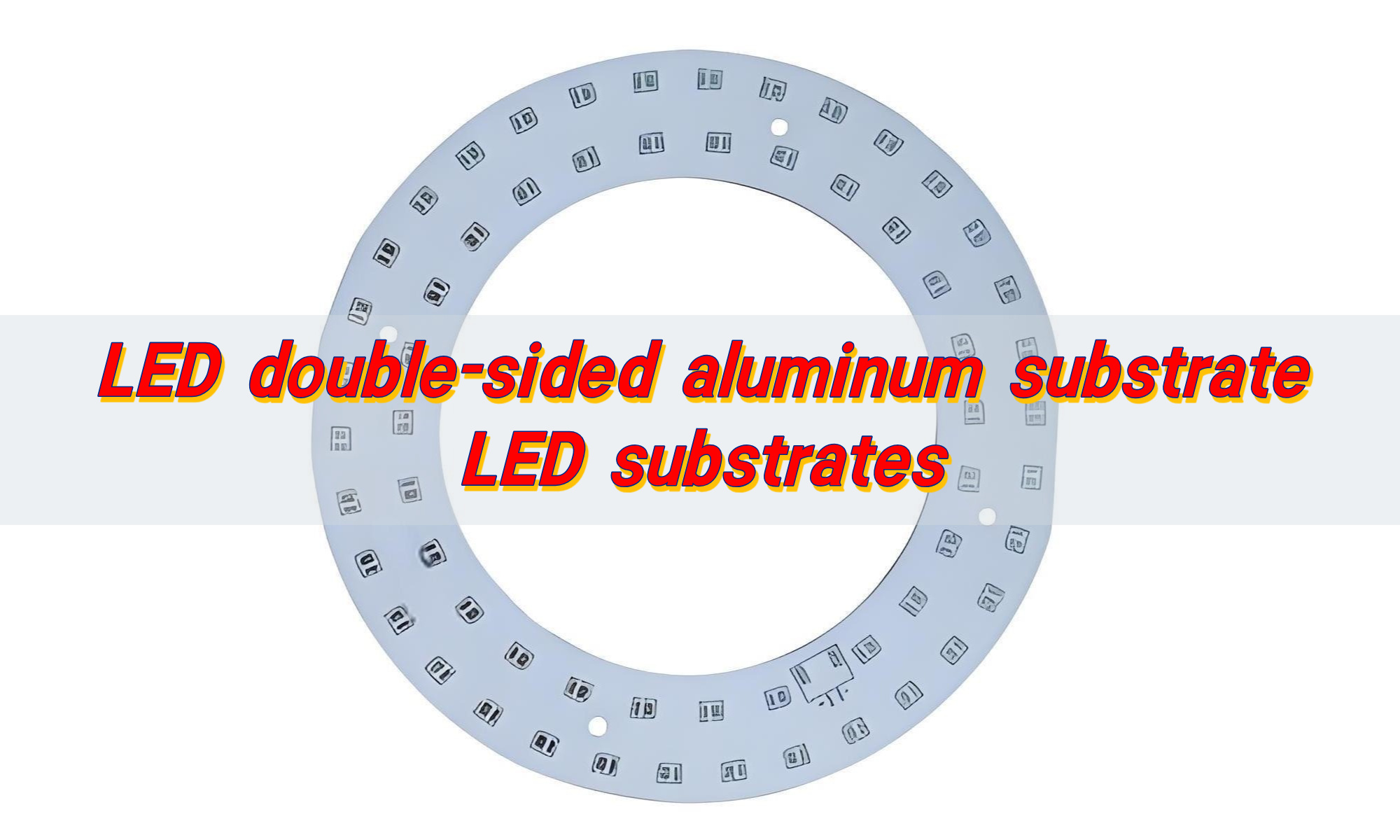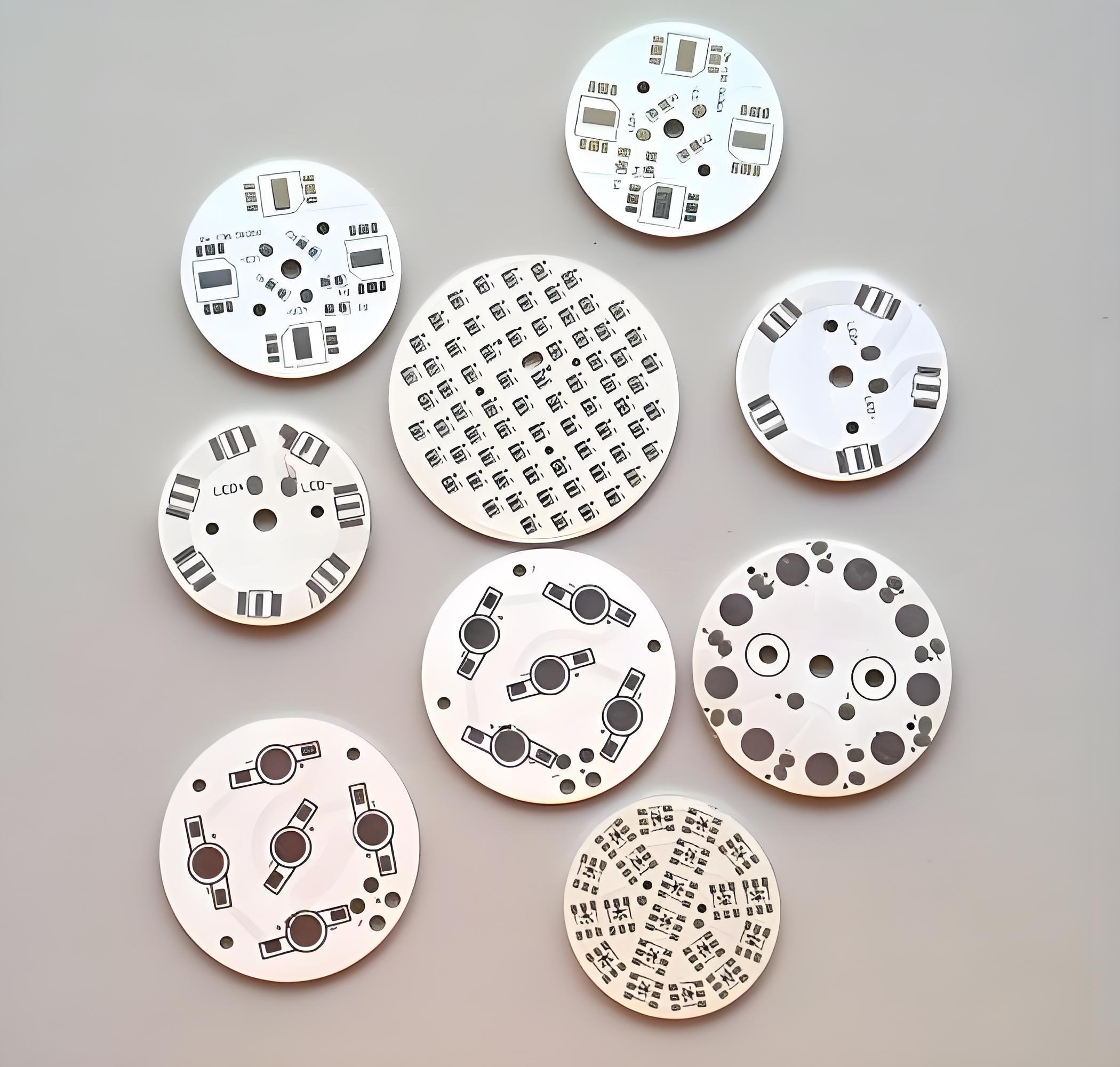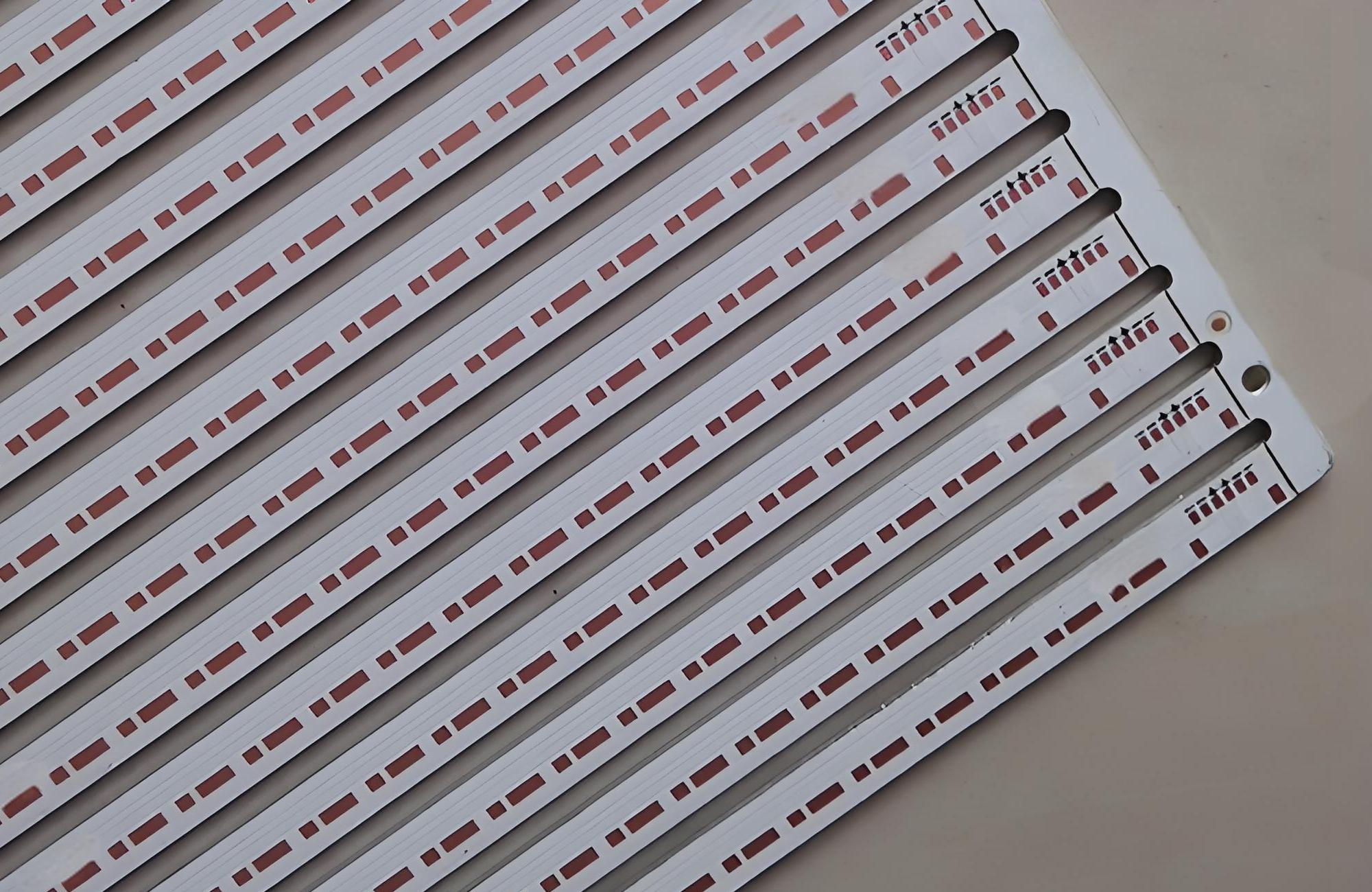LED double-sided aluminum substrate is a high thermal conductivity circuit board with copper wiring on both sides of the aluminum substrate. LEDs are soldered on one side and drive or control circuits are carried on the other side. The aluminum core in the middle dissipates heat quickly, allowing high-power lamp beads to operate stably in a smaller space. It has been widely used in automotive headlights, street lights and high-density backlight modules.
Are you curious about Best TechnologyÔÇÖs LED double-sided aluminum substrate?
- Will double-sided wiring lead to short circuits or signal distortion due to inaccurate interconnections?
- Is heat dissipation balanced on both sides, preventing localized overheating that could affect the life of the lamp?
- Will the copper foil easily peel off after repeated soldering?
- Does the cost of double-sided processing justify the performance improvement?
Best TechnologyÔÇÖs LED double-sided aluminum substrate can answer these questions.
- Using high-precision drilling and alignment processes, interconnect holes are precisely positioned, providing reliable insulation and preventing short circuits or signal issues.
- The double-sided aluminum base design, with its symmetrical heat dissipation path, ensures even heat conduction, reduces localized overheating, and extends the life of the lamp.
- The copper foil and aluminum base are tightly bonded through a high-temperature pressing process, resistant to soldering heat shock and maintaining stable adhesion after repeated soldering.
- The double-sided design increases circuit density and heat dissipation efficiency. Process costs are optimized through large-scale production, and the performance improvements far outweigh the cost increases.
What is double sided aluminum PCB?
Double-sided aluminum PCB is a printed circuit board with aluminum as its base material, featuring copper layers on both sides. It includes an insulating dielectric layer between the copper and aluminum base. This design enables routing on both sides, unlike single-sided boards that only allow traces on one side.
Because aluminum offers excellent heat dissipation, these boards are widely used in high-power LED lighting. They prevent overheating, which can damage LEDs or reduce their lifespan.
With two conductive layers, double-sided boards also allow more complex circuits, making them ideal for advanced LED assemblies.
Types of double-sided aluminum PCB
Double-sided aluminum PCBs come in different forms, depending on application needs. The most common types include:
- Standard Double-Sided Aluminum PCB: These have two copper layers and a dielectric layer between the aluminum base. They are simple yet effective for medium-power applications.
- Hybrid Double-Sided PCB: This type of substrate combines the benefits of two different materials, such as aluminum and ceramic, to provide improved thermal conductivity and electrical performance.
- Flexible Double-Sided PCB: This type of substrate is made of a flexible material and has a layer of aluminum on both sides. It is commonly used in applications where flexibility is required, such as in wearable electronics.
- High-frequency double-sided aluminum PCB: This type of substrate is designed for high-frequency applications and has a low dielectric constant, which helps to reduce signal loss.
Each type serves a specific purpose. Choosing the right one depends on thermal requirements, circuit complexity, and mechanical needs.
How does a double-sided aluminum PCB differ from a single-sided one?
Single-sided aluminum PCB has one copper layer for circuit routing, limiting its complexity. A double-sided board, on the other hand, has two copper layers, allowing for denser component placement and more advanced designs.
Another major difference is thermal management. Both provide excellent heat dissipation thanks to the aluminum base, but double-sided boards handle higher power loads better. This is crucial for high-brightness LED systems where heat can build up quickly.
Lastly, cost and assembly differ. Double-sided boards may cost slightly more.
What materials are used in LED double-sided aluminum substrates?
LED double-sided aluminum substrate typically consists of:
- Aluminum Base Layer: Provides structural strength and excellent thermal conductivity.
- Dielectric Layer: Acts as an insulator between the aluminum base and copper layer while offering high thermal performance.
- Copper Foil: Present on both sides for circuit routing. Thickness varies depending on current requirements.
- Solder Mask: Protects the copper from oxidation and prevents short circuits.
- Silkscreen Layer: Used for labeling components and guiding assembly.
Some boards may also include surface finishes like ENIG (Electroless Nickel Immersion Gold) for better solderability and corrosion resistance.
What are the advantages of using double-sided LED substrates over FR4?
Compared to FR4 boards, double-sided aluminum substrates have multiple advantages:
- Superior Heat Dissipation: Aluminum conducts heat away from LEDs quickly, reducing thermal stress.
- Enhanced Durability: Aluminum-based boards are more resistant to mechanical stress than FR4.
- Better Power Handling: Perfect for high-power LED applications where FR4 cannot manage heat efficiently.
- Longer LED Lifespan: Lower operating temperatures mean LEDs last longer, reducing replacement costs.
- Compact Design: Double-sided routing allows smaller, more efficient layouts.
While FR4 is common in electronics, it cannot match aluminum substrates for thermal and structural performance in LED systems.
What thickness options are available for double-sided LED aluminum boards?
Thickness plays a vital role in thermal performance and strength. Typical options include:
- Aluminum Base Thickness: 1.0 mm, 1.2 mm, 1.5 mm, and 2.0 mm.
- Copper Thickness: Usually 1 oz (35 ╬╝m), 2 oz (70 ╬╝m), or even higher for high-current applications.
- Dielectric Layer: Often between 75 ╬╝m and 150 ╬╝m, depending on thermal needs.
Choosing the right thickness ensures proper heat dissipation without adding unnecessary weight.
Where is the double-sided aluminum substrate used?
Double-sided aluminum substrates are versatile. Common applications include:
- LED Lighting Systems: Indoor, outdoor, and industrial lighting where thermal management is critical.
- Automotive Lighting: Headlights, tail lamps, and dashboard lighting.
- Consumer Electronics: Devices that require compact yet heat-resistant boards.
- Medical Devices: Surgical lights and diagnostic equipment that must stay cool for safety.
- Power Electronics: High-power converters and power supplies where heat is a major concern.
The ability to handle high power and maintain stability under heat makes these substrates essential for advanced applications.
How is a double-sided aluminum PCB manufactured?
The manufacturing process involves several precise steps:
- Aluminum Base Preparation: The base is cleaned and treated to improve adhesion.
- Dielectric Layer Application: A thermally conductive but electrically insulating layer is added.
- Copper Foil Lamination: Copper is laminated on both sides under heat and pressure.
- Circuit Patterning: Copper layers are etched to create circuit paths.
- Drilling and Plating: Holes are drilled and plated to connect layers.
- Surface Finish: ENIG, HASL, or other finishes are applied for better solderability.
- Solder Mask and Silkscreen: Applied for protection and labeling.
- Testing: Each board undergoes electrical and thermal testing to ensure quality.
Precision is key to achieving tight tolerances and long-lasting performance.
What are the applications of double-sided aluminum PCB?
These boards power a wide range of industries:
- LED Lighting: Streetlights, floodlights, and smart lighting solutions.
- Displays and Signage: High-brightness displays that run for long hours.
- Telecommunication Equipment: Devices where heat control is essential for reliability.
- Aerospace and Defense: Applications requiring extreme durability and stability.
- Renewable Energy: Solar inverters and power control systems that demand high thermal performance.
Wherever heat and reliability matter, double-sided aluminum PCBs are the go-to solution.
Conclusion:
Double-sided aluminum substrates for LEDs are able to handle high power, dissipate heat efficiently, and support compact designs without compromising performance. Their advantages over FR4 make them the best choice for demanding applications.
If you need custom LED aluminum substrates for your projects, Best Technology is here to help. We provide premium-quality aluminum PCBs, strict quality control, and fast delivery. Contact us today at sales@bestpcbs.com






